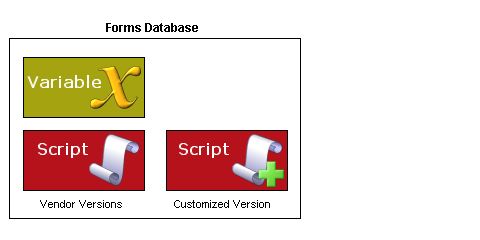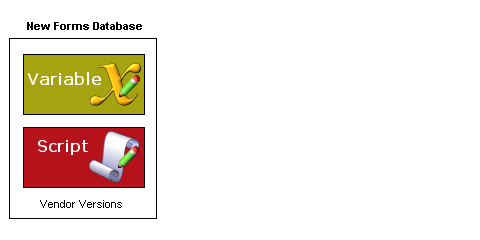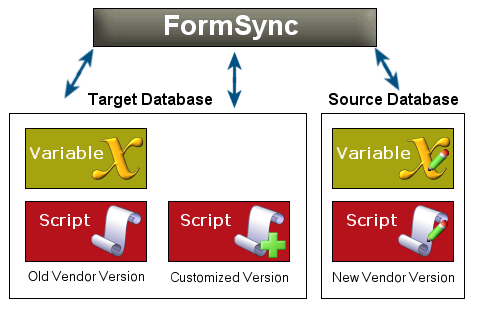Synchronizing global objects
In this illustration, a forms database contains the vendor versions of a global variable and a global .NET script.

A customer developer changes a line of code in the script and assigns User scope to the customization, with user name B_Smith. The change results in the addition of a customized object to the forms database.

When B_Smith uses a form that references the script, the customized version is called, rather than the vendor version. The vendor version remains unchanged and is not accessible to B_Smith. Other users do not have access to the customized script.
Some time later, a new forms database from a service pack or version upgrade is issued containing revised vendor versions of the variable and the script.

The selection of configurations for synchronizing global objects is similar to the selection for synchronizing forms, with the forms database containing the customized objects in the Target configuration and the new forms database in the Source configuration:

In general, a global object is treated as a unit in synchronization, unlike a form, whose multiple specifications for components and form properties can be handled individually in the merge process. Synchronization options for all global objects are Remove customizations (default) and Keep customizations. Scripts and event handlers have additional options to edit customized versions of those objects.